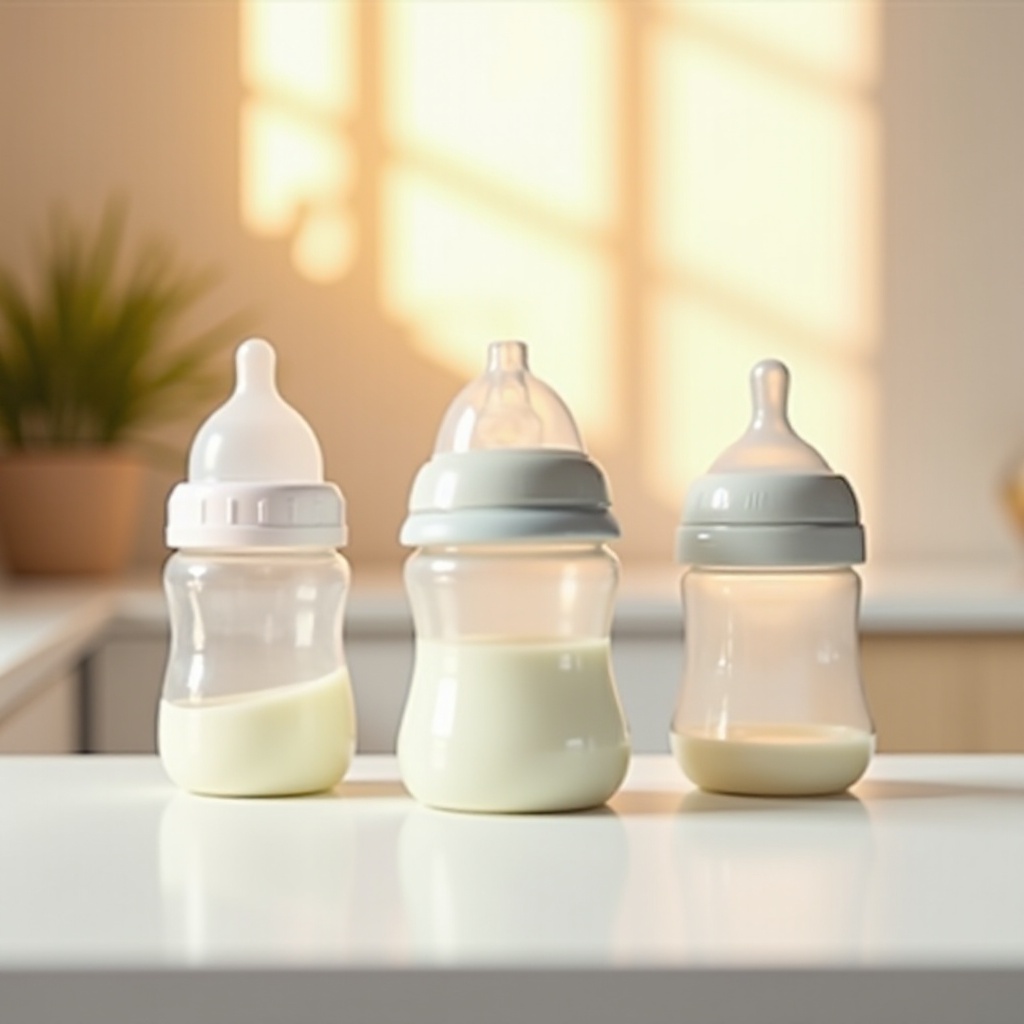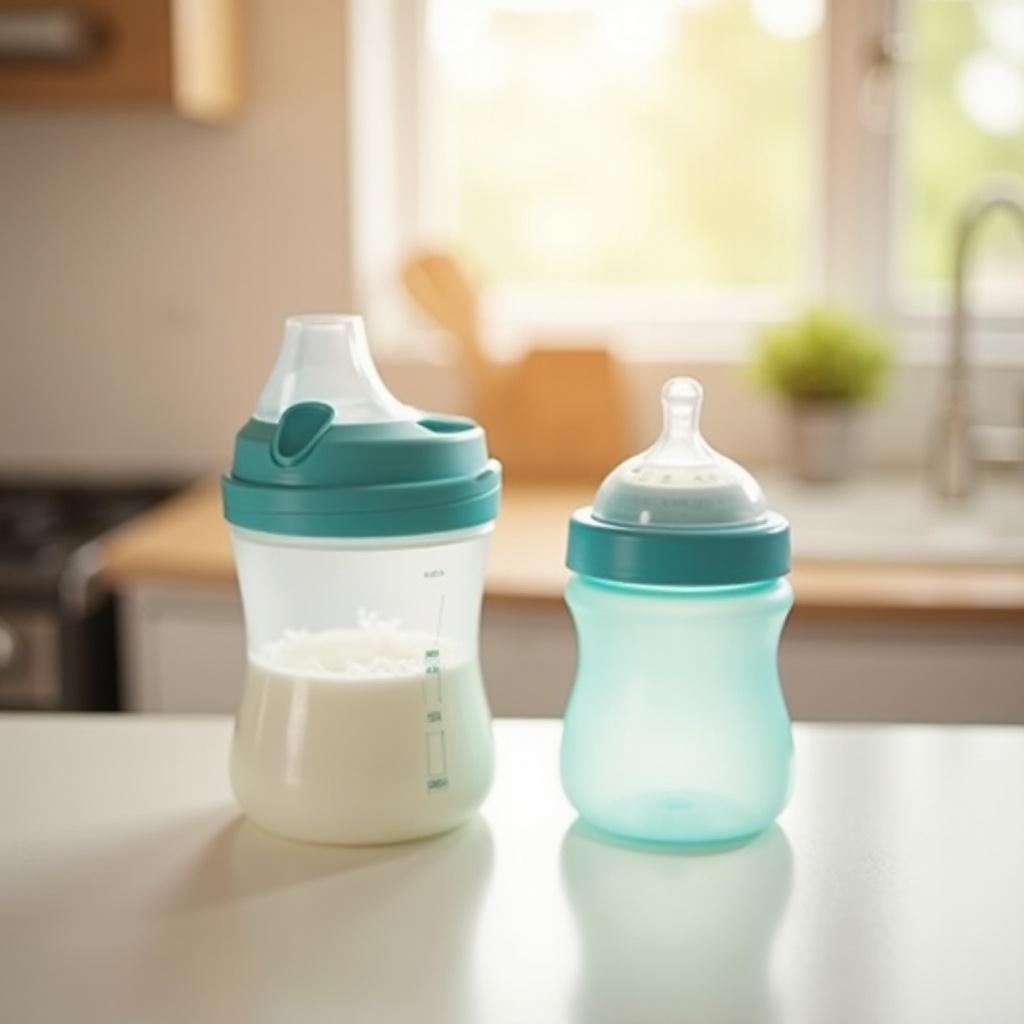Difference Between Sippy Cup and Bottle: A Comprehensive Guide for Parents
Introduction
Parenting presents numerous decisions, particularly when it comes to feeding your child. Understanding the difference between a sippy cup and a bottle is crucial for making informed choices that contribute to your child’s developmental milestones. Let’s dive into the essential differences, benefits, and factors that should guide your decision-making process.

Understanding Sippy Cups
Sippy cups represent a transitional tool designed to move your child from bottle feeding to drinking independently from a regular cup. Usually made of child-safe materials like BPA-free plastic or silicone, sippy cups come equipped with spill-resistant lids and handles that are easy for little hands to grasp.
Several types of sippy cups are available:
1. Spout Cups: Featuring a hard or soft spout, they mimic the shape of a bottle nipple, making the transition easier.
2. Straw Cups: They promote sipping skills and can be beneficial for dental health.
3. 360-Degree Cups: Without a traditional spout or straw, these cups allow drinking from any edge.
On the developmental front, sippy cups encourage motor skills, coordination, and the beginnings of independence in your child. It’s important to introduce sippy cups when your child is developmentally ready, usually around six months of age.
Understanding Baby Bottles
Baby bottles are primarily used to feed infants and young babies, especially when breastfeeding is not an option or when breast milk needs to be supplemented. Bottles can be made from glass, plastic, or silicone, each with its own set of pros and cons.
Typical components of baby bottles include:
1. Nipple: Usually made of silicone or latex and comes in various flow levels to match the baby’s sucking strength.
2. Bottle: The main body that holds the liquid.
3. Collar and Cap: These secure the nipple and prevent spills.
Baby bottles play a significant role in the early stages of a child’s life, as they can hold expressed breast milk or formula. They are crucial in ensuring that your baby receives adequate nutrition, and they can easily be paired with bottle warmers to provide a comfortable feeding temperature.

Key Differences Between Sippy Cups and Bottles
When comparing sippy cups and bottles, several factors come to light, influencing parental choice based on a child’s age, developmental stage, and specific requirements.
-
Design and Purpose:- Bottles are designed to mimic breastfeeding, suitable for newborns and infants.- Sippy cups are designed for older babies and toddlers to introduce them to drinking independently from a cup.
-
Material and Safety:- Both are made from similar materials such as BPA-free plastic, glass, and silicone.- Sippy cups often have additional features like spill-proof lids and handles.
-
Developmental Benefits:- Bottles focus on providing nutrition and comfort similar to breastfeeding.- Sippy cups promote motor skills, coordination, and independence.
-
Ease of Cleaning:- Bottles usually have more components, making them a bit time-consuming to clean.- Sippy cups can be easier to clean, although some designs come with extra parts like valves and straws that need thorough cleaning.

The Role of Bottle & Food Warmers in Feeding
As your child transitions from bottle feeding to using sippy cups, bottle warmers can still play a significant role. Bottle warmers are handy devices that heat baby bottles and food to a safe and consistent temperature.
Benefits of using bottle warmers include:
1. Convenience: They provide quick and even warming.
2. Safety: Ensure that the milk or food reaches the appropriate temperature, preventing hotspots that could burn your baby’s mouth.
3. Versatility: Some bottle warmers are designed to warm both bottles and sippy cups, offering longer usability as your child transitions from bottle feeding to sippy cups.
When considering a bottle warmer, look for features like automatic shut-off, compatibility with various bottle and sippy cup sizes, and ease of use to make feeding times more efficient.
Choosing the Right Option for Your Child
Selecting either a sippy cup or a bottle depends on your child’s age, readiness, and developmental needs. Start with baby bottles for newborns and transition to sippy cups around six months when your child can sit up and begin exploring solid foods. Always consider the materials, safety features, and the specific needs of your child when making your choice.
Conclusion
Understanding the difference between sippy cups and bottles empowers you to make the best decisions for your child’s feeding needs. Each has its distinct purpose and benefits, complementing your child’s growth and development stages. By choosing the right feeding tools at the right time, you ensure a smooth and positive feeding journey for your little one.
Frequently Asked Questions
When should I transition my baby from a bottle to a sippy cup?
Experts recommend transitioning your baby from a bottle to a sippy cup around six months to one year of age. Look for signs like your child showing interest in your cup, able to sit up unsupported, and can manage some solid foods.
Are sippy cups better for dental health compared to bottles?
Yes, sippy cups can be better for dental health. Prolonged bottle use can lead to tooth decay and misalignment, while sippy cups encourage your child to use muscles differently and transition to open cups sooner.
Can I use a bottle warmer for both bottles and sippy cups?
Many bottle warmers are versatile and can heat both bottles and sippy cups. Check the product specifications to ensure compatibility with the types and sizes of bottles and sippy cups you use for your child.
